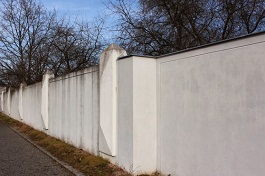
Prague will have a study done on the modifications of the Ďáblice Cemetery
 |
"Given the significance of this national cultural monument, we find it desirable to improve the current design of the cemetery from the 1990s," the document states. SPH and IPR will collaborate with the Czech Chamber of Architects during the competition announcement.
For example, the live boxwood hedges have been damaged, being afflicted by pests and gradually drying out. According to the document, historical inaccuracies arose during repairs in the 1990s due to a lack of information, leading to incorrect names on symbolic tombstones.
In the future, shiny tombstones with names that do not correspond to the burial site should be removed, as many individuals were conclusively buried elsewhere. The spaces of the cubist towers near the old entrance gate could be used, and graves identified by their original numbers. Visitors could learn about the history of the place and the individuals buried there through applications and QR codes.
The second largest cemetery in Prague, after the Olšany Cemeteries, was established between 1912 and 1914 based on a design by cubist architect Vlastislav Hofman. The cemetery was declared a national cultural monument in 2017. Between 1943 and 1961, 72 mass graves were excavated at the site of the Honorary Burial Ground. These graves primarily contained individuals whose burials were paid for by the city, as well as those executed between 1946 and 1947, and some victims of both totalitarian regimes from 1943 to 1945 and after 1948.
The English translation is powered by AI tool. Switch to Czech to view the original text source.
0 comments
add comment












